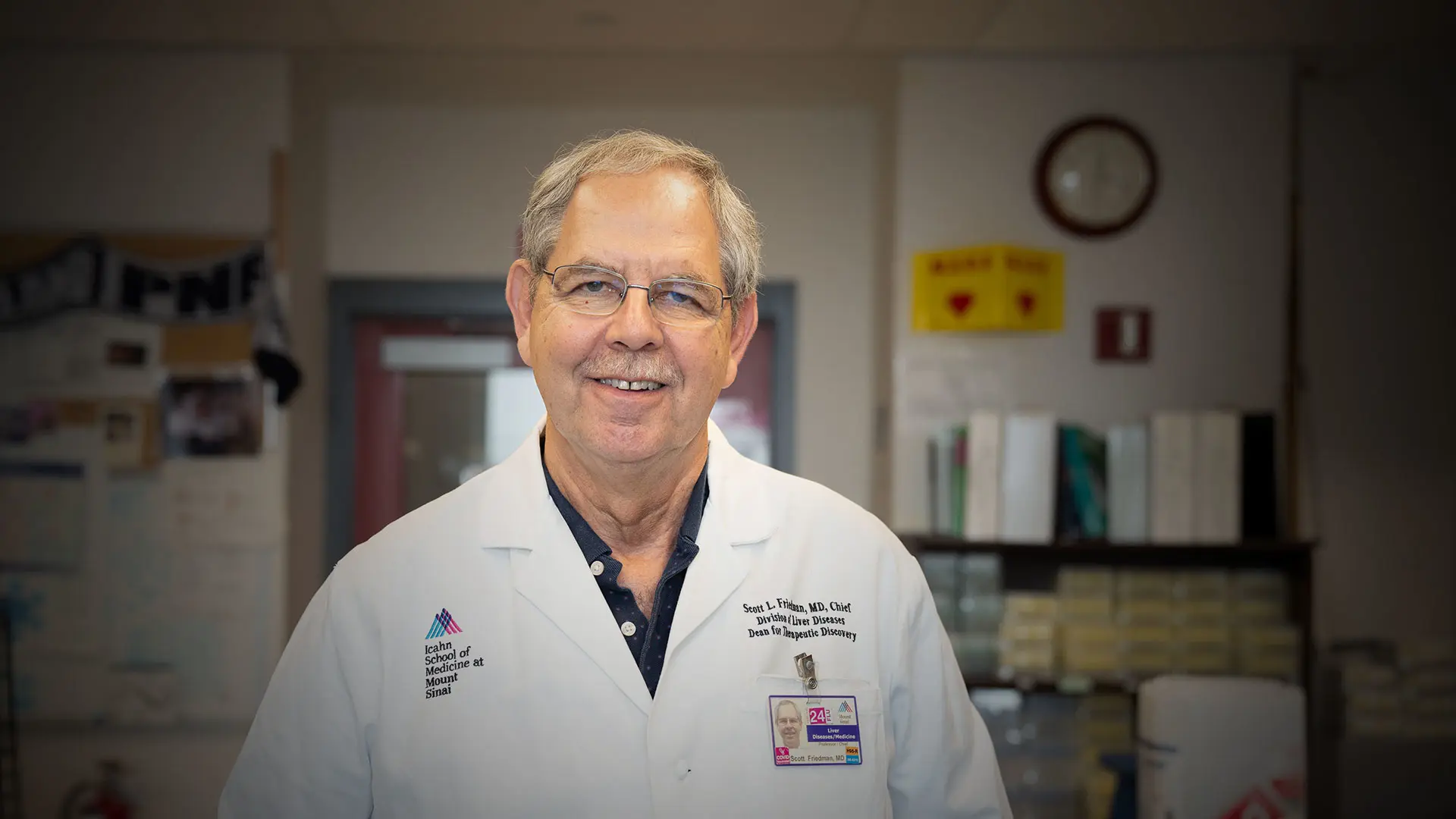After 23 years of efforts to unravel the mysteries of the liver in his role as Chief of the Division of Liver Diseases at the Icahn School of Medicine at Mount Sinai, Scott Friedman, MD, has passed off his administrative responsibilities to focus more intently on research at a crucial time in the field.
“Over time, I have become more intensely passionate about research in this area and how best to advance that,” explains Dr. Friedman, Irene and Dr. Arthur M. Fishberg Professor of Medicine, co-Director of the Cancer Mechanisms program of The Tisch Cancer Institute, and Dean for Collaborative Research and Partnerships at Icahn Mount Sinai. “Given all the innate strengths we have in liver disease across many disciplines at Mount Sinai, I thought it was time to consolidate that and bring it to the next level.”
In January 2024, Dr. Friedman stepped down as Division Chief to launch the Mount Sinai Institute for Liver Research. This unique multidisciplinary program aims to identify new therapeutic targets and establish novel, effective therapies that improve outcomes among patients with liver disease. Backed by Mount Sinai’s breadth and depth in research and care, Dr. Friedman believes it has the potential to become the world leader in hepatic biology and disease.
“We have a wide array of expertise across the spectrum of science that we can engage,” Dr. Friedman says. “We have a legacy of caring for a very diverse population and we have the Mount Sinai Million Health Discoveries Program, which is rich in genotype and phenotype data. These are extraordinary resources that create a fertile environment for progress.”
In Dr. Friedman, the Institute also has a pioneer in the field who, over the course of his 45-year career, discovered that the hepatic stellate cell is a driving factor in cirrhosis of the liver. As significant as his finding was at the time, Dr. Friedman believes the field is now on the precipice of another significant breakthrough.
“There are new technologies, such as single-cell sequencing, that make it easier to clarify disease mechanisms,” he notes. “There are new imaging methods for analyzing the liver. There are new ways to deliver gene therapies to different liver cells. All these tools hold the promise for developing a new generation of drugs for liver regeneration, fibrosis, and injury, and that was a motivator for starting the Institute.”
“We have a wide array of expertise across the spectrum of science that we can engage. We have a legacy of caring for a very diverse population. ... These are extraordinary resources that create a fertile environment for progress.”
- Scott Friedman, MD
Although Dr. Friedman believes the promise of such treatments is one the Institute will realize, his immediate goal is to ensure it is well supported through philanthropic gifts and National Institute of Diabetes and Digestive and Kidney Diseases grants. Based on his involvements with liver centers as a member and then advisor at the University of California, San Francisco, and Chair of the external advisory committee at Yale University, he is confident that such funding will be secured. But Dr. Friedman is also excited by the opportunity to focus more on research, specifically his recent studies involving therapeutic targets. They include the potential of blocking neurotrophic receptor tyrosine kinase 3-neurotrophin 3 (NRTK3) in activated stellate cells.
“We discovered in a study we did that NRTK3 is expressed in these cells, which we did not expect to see because it is active in nerve cells,” Dr. Friedman explains. “We were able to obtain a commercially available NRTK3 inhibitor that not only blocks fibrosis even in advanced stages, but also reduces the development of liver cancer.”
Based on those findings, Dr. Friedman has filed a patent, prepared a National Institutes of Health R01 grant submission, and is looking at industry partnerships to further explore the therapeutic potential of NRTK3. The study, “An autocrine signaling circuit in hepatic stellate cells underlies advanced fibrosis in nonalcoholic steatohepatitis,” was published in January 2023 in Science Translational Medicine.
In addition to conducting his own groundbreaking research through the Institute, Dr. Friedman is creating an environment that will enable other researchers to pursue their own efforts. He wants to build the Institute’s research team, foster collaboration through pilot feasibility funding, and stimulate more interactions across the faculty that lead to progress on liver disease.
“I see this as the nucleation point for anyone who has an interest in the liver,” he says. “My goal is to achieve awareness among the research community that, if you want to study liver disease in all its manifestations, Mount Sinai is the place you need to be.”
